 |
Orlando |
 |
Code of Ordinances |
 |
Chapter 61. ROADWAY DESIGN AND ACCESS MANAGEMENT |
 |
Part 3. PARKING AND LOADING |
 |
Appendix 3B. LANDSCAPING FOR PARKING LOTS AND GARAGES |
§ 61.312. Landscaping Adjacent to Street Right-of-way.
Interior landscaping for vehicular use areas shall be designed and located as described below and as depicted in Figures 20 through 25.
(a)
Landscape Area Size Requirements. The minimum depth of landscape areas required by this Part shall be equal to the depth of the adjacent parking space. The minimum width of landscape areas required by this Part shall be as follows:
(1)
Row-end landscape areas - 10 feet wide.
(2)
Intermediate landscape areas - 10 feet wide, or the width of the two head-on parking spaces.
(3)
Intermediate landscape planters - 5 feet × 5 feet square.
(4)
Central landscape strip - 7.5 feet wide.
(5)
Pedestrian walkway with central landscape strip - 13.5 feet wide.
(6)
Perimeter landscape areas - between buildings and vehicular use areas; a minimum of 3 feet, except where precluded by drive-through windows, loading docks or other specific vehicular use requirements.
(7)
Landscape areas adjacent to rights-of-way and property lines - 7.5 feet. Other building sites: minimum of 7.5 feet, or 5 feet where there is an abutting landscape area of 5 feet wide or greater on that adjacent property. When the 5 feet width is provided, the site shall provide a landscaped area 10 feet wide to accommodate canopy trees planted on 50 feet centers within the row of parking adjacent to the perimeter.
(b)
Landscape Area Spacing Requirements. To encourage design flexibility while achieving the purposes of this Part, the maximum number of parking spaces allowed between landscape areas shall be 10 parking spaces (see Figure 20), except as provided herein.
(1)
Rows of 11 to 14 parking spaces, when the minimum width of each landscape area is increased by one foot for each additional parking space in excess of 10 spaces in a row (Figure 21). Rows of parking spaces of 12 or more spaces require an intermediate landscape planter (with an understory tree or palm) shall be required (Figure 22).
(2)
As an alternative, 11 to 14 parking spaces is permitted on one side of a head-to-head parking row when an intermediate landscape area (at least 20 feet in width) is provided between every 6 parking spaces on the opposing side of the head-to-head parking row (Figure 23). The row end landscape areas shall be a minimum of 12 feet in width.
(3)
There is no maximum, when the parking spaces: include row end landscape areas at least 12 feet in width and abut a central landscape strip at least 7.5 feet in width or a central landscape strip with pedestrian walkway at least 13.5 feet in width (Figures 24 and 25); abut a perimeter landscape area; or abut a landscape area adjacent to a right-of-way or property line.
(c)
Landscape Area Material Requirements. Landscaping shall be provided in accordance with Chapter 60 and the following additional requirements:
(1)
Intermediate landscape planters shall contain one understory tree or palm.
(2)
Landscape areas and intermediate landscape areas shall contain a minimum of one canopy tree with 3" caliper, a minimum overall height of 12 feet, and a minimum clear-trunk height of 6 feet.
(3)
Perimeter landscape areas required for vehicular use areas adjacent to property lines and public rights-of-way, and other building sites shall contain the following:
a.
At least one canopy tree for every 50 lineal feet or fraction thereof. Required trees shall have a minimum caliper of 2", and a minimum overall height of 12 feet. Required trees do not have to be uniformly spaced as long as the required number is provided. Where site conditions render the use of canopy trees impractical, three understory trees or palms may be used in lieu of each canopy tree.
b.
Non-residential, multi-family and industrial perimeter landscape areas shall also contain a continuous row of evergreen groundcovers and plants not to exceed 4 feet in height. Required plants shall be a minimum height of 18" at time of planting. At least 60% of the required plants shall have a natural mature height of 3 feet.
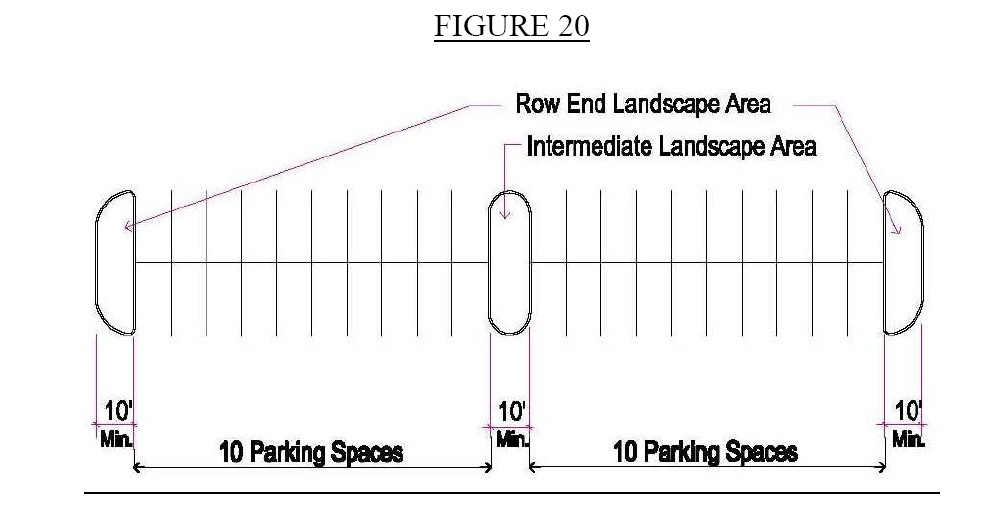
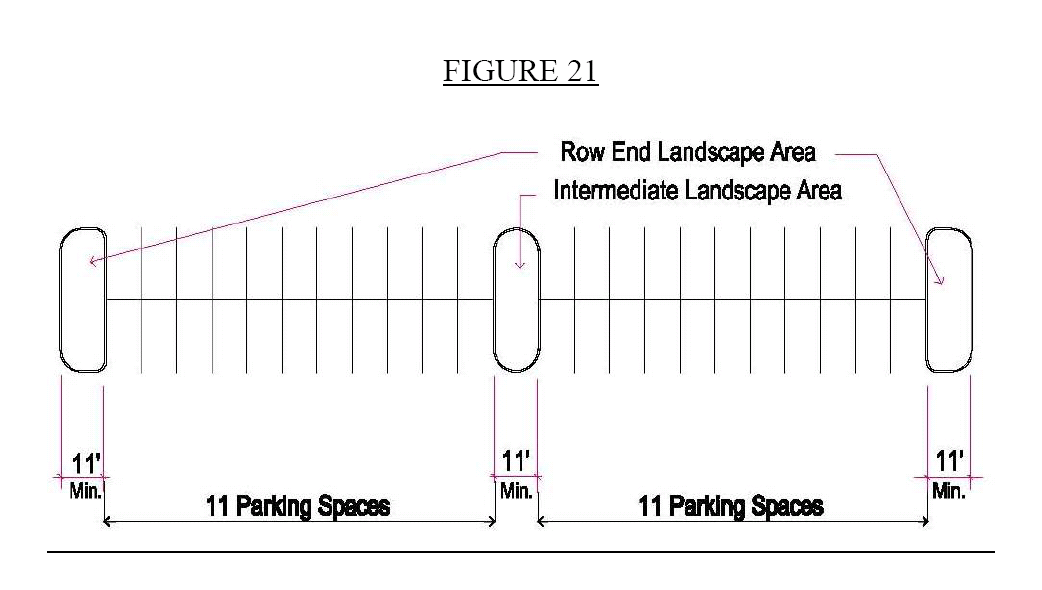
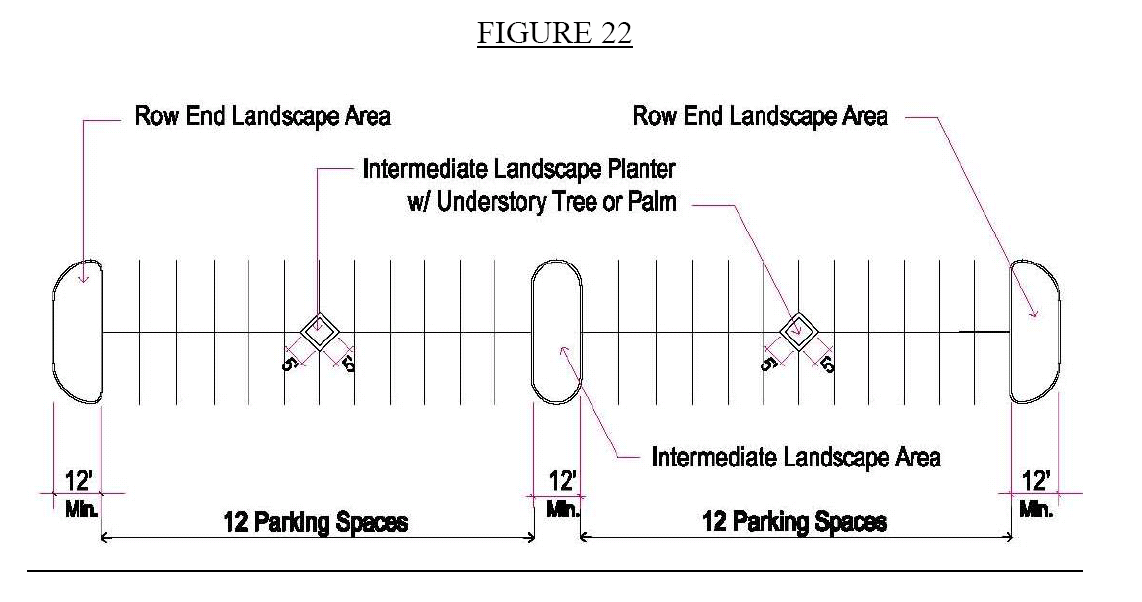

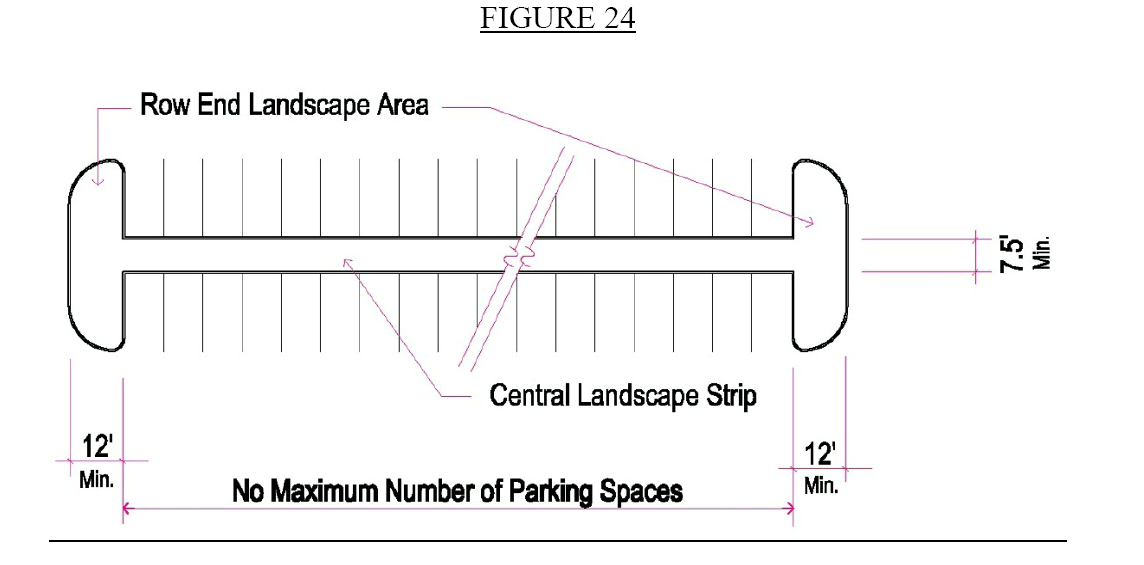
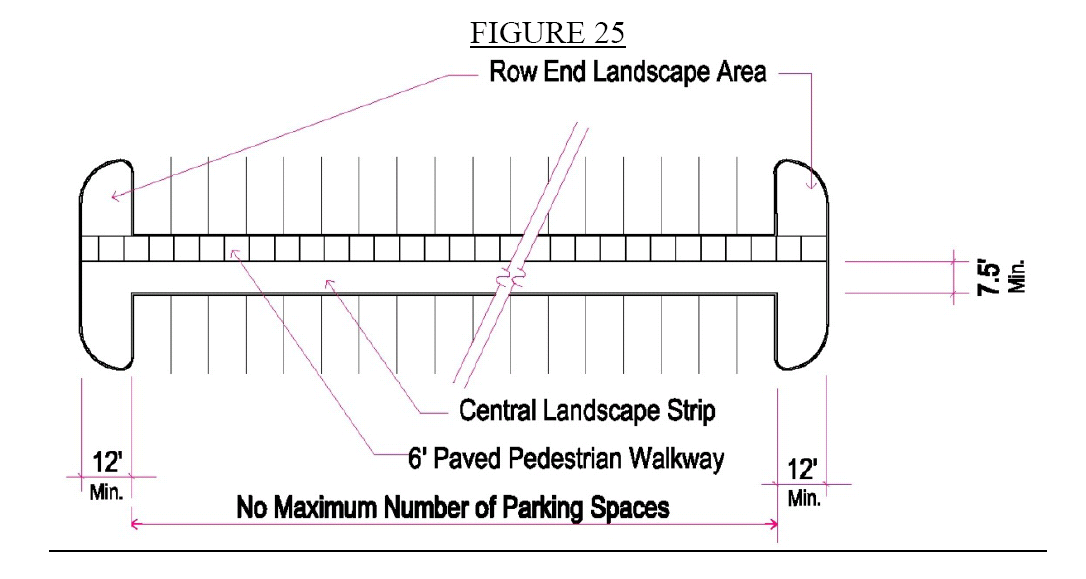
(Ord. No. 2010-33, § 1, 8-30-2010, Doc. #1008301102; Ord. No. 2019-10 , § 2, 3-25-2019, Doc. #1903251201)